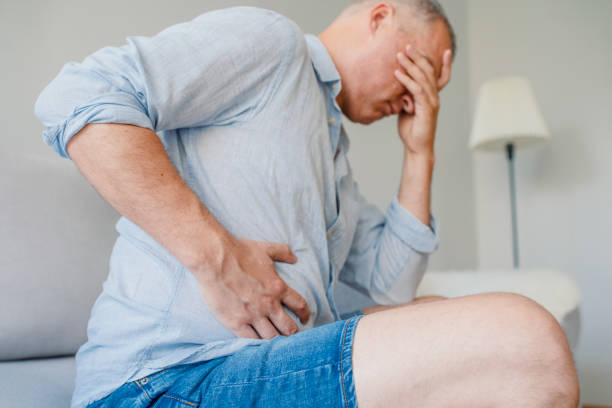Introduction
Experiencing symptoms commonly associated with urinary tract infections (UTIs), such as frequent urination, urgency, and discomfort, can be perplexing when laboratory tests reveal no evidence of bacteria in the urine. In this article, we’ll delve into the phenomenon of UTI-like symptoms without detectable bacteria, exploring potential causes, diagnostic challenges, and avenues for relief.
Common Symptoms:
Frequent Urination: The urge to urinate more often than usual.
Urgency: Feeling a compelling need to urinate immediately.
Discomfort or Pain: Pain or burning sensation during urination.
Typical UTI Causes:
Bacterial Infection: Most UTIs are caused by bacteria, typically Escherichia coli (E. coli).
Inflammation: Bacterial presence triggers inflammation in the urinary tract.
UTI-Like Symptoms without Detectable Bacteria: Possible Causes
Interstitial Cystitis (IC):
Chronic Bladder Inflammation: IC involves chronic inflammation of the bladder, mimicking UTI symptoms.
No Bacterial Infection: Unlike UTIs, IC does not involve a bacterial infection.
Urethral Syndrome:
Non-Infectious Inflammation: Inflammation of the urethra without a bacterial cause.
Symptom Overlap with UTIs: Urethral syndrome symptoms can resemble those of UTIs.
Pelvic Floor Dysfunction:
Muscle Issues: Dysfunction in the pelvic floor muscles can lead to urinary symptoms.
No Infection Present: Unlike UTIs, pelvic floor dysfunction is not caused by bacterial infection.
Sexually Transmitted Infections (STIs):
Symptom Similarities: Some STIs can cause symptoms resembling UTIs.
Bacterial or Viral Causes: STIs may involve bacteria or viruses, but the symptoms may not always be detected in routine urine tests.
Overactive Bladder (OAB):
Bladder Contractions: OAB involves involuntary contractions of the bladder muscles.
Not Infection-Related: OAB is not caused by bacterial infection.
Urinalysis and Culture:
Potential False Negatives: Bacterial infections may not always be detected in standard urine tests.
Additional Cultures: Sometimes, more specialized cultures are needed to identify less common bacteria.
Cystoscopy:
Direct Bladder Inspection: Cystoscopy allows a direct view of the bladder and may reveal signs of inflammation or other abnormalities.
Imaging Studies:
Ultrasound or MRI: Imaging may help assess the urinary tract for structural issues.
Rule Out Stones or Tumors: Stones or tumors can cause symptoms similar to UTIs.
Lifestyle Modifications:
Fluid Intake: Adequate hydration is crucial for urinary health.
Avoiding Irritants: Limiting caffeine, alcohol, and spicy foods can help manage symptoms.
Bladder Training:
Scheduled Voiding: Establishing a routine for urination can help improve bladder control.
Medications:
Antibiotics: In some cases, healthcare providers may prescribe antibiotics empirically, even without confirmed bacterial infection.
Medications for Bladder Control: Antimuscarinic or beta-3 agonist medications can be considered for conditions like OAB.
Physical Therapy:
Pelvic Floor Therapy: Targeted exercises and therapies can address pelvic floor dysfunction.
Conclusion
Experiencing UTI-like symptoms without bacteria in urine can be challenging both diagnostically and emotionally. Seeking the expertise of healthcare professionals, undergoing comprehensive testing, and exploring various management strategies can help individuals find relief and better understand the underlying causes of their symptoms. It’s essential to approach these situations with patience, as uncovering the mystery behind atypical UTI symptoms may require a thorough and collaborative effort between healthcare providers and patients.
Can stress contribute to UTI-like symptoms without bacterial infection?
Stress can exacerbate symptoms in some cases, but it is not a direct cause. Exploring stress management techniques may complement overall symptom management.
Is it common to have recurrent UTI-like symptoms without detectable bacteria?
Recurrent symptoms without bacterial infection are less common but not unheard of. A comprehensive evaluation is necessary to determine the underlying cause.
Can hormonal changes contribute to UTI-like symptoms without infection?
Hormonal changes, especially in postmenopausal women, may affect the urinary tract. However, a thorough examination is needed to rule out other potential causes.
Are there dietary changes that can help alleviate symptoms?
Avoiding potential irritants like caffeine and spicy foods may provide relief for some individuals. However, dietary changes should be discussed with a healthcare provider.
Can pregnancy contribute to UTI-like symptoms without bacterial infection?
Pregnancy-related changes, such as increased pressure on the bladder, can contribute to urinary symptoms. However, other causes should be explored to rule out potential issues.

